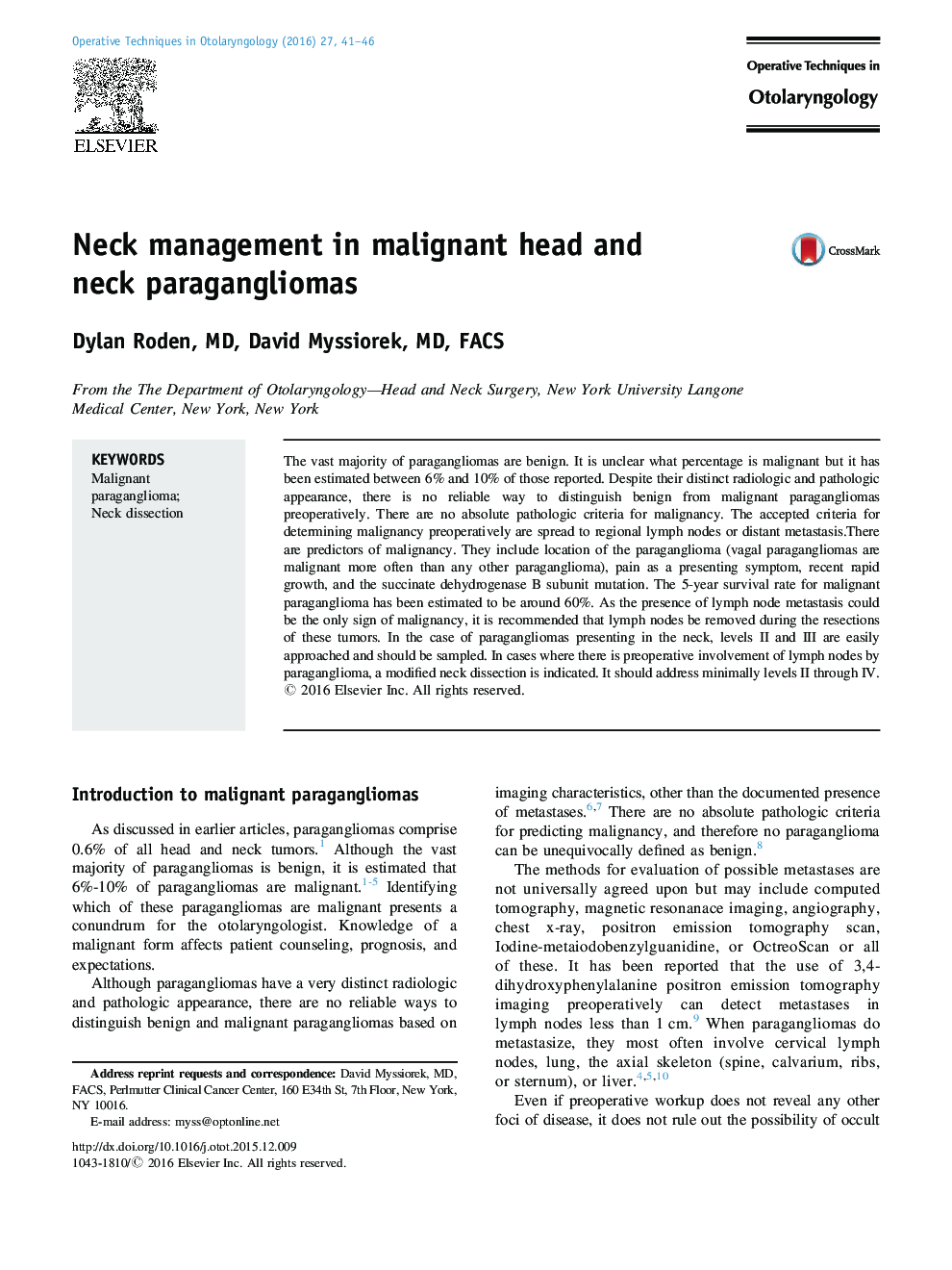| Article ID | Journal | Published Year | Pages | File Type |
|---|---|---|---|---|
| 4122555 | Operative Techniques in Otolaryngology-Head and Neck Surgery | 2016 | 6 Pages |
The vast majority of paragangliomas are benign. It is unclear what percentage is malignant but it has been estimated between 6% and 10% of those reported. Despite their distinct radiologic and pathologic appearance, there is no reliable way to distinguish benign from malignant paragangliomas preoperatively. There are no absolute pathologic criteria for malignancy. The accepted criteria for determining malignancy preoperatively are spread to regional lymph nodes or distant metastasis.There are predictors of malignancy. They include location of the paraganglioma (vagal paragangliomas are malignant more often than any other paraganglioma), pain as a presenting symptom, recent rapid growth, and the succinate dehydrogenase B subunit mutation. The 5-year survival rate for malignant paraganglioma has been estimated to be around 60%. As the presence of lymph node metastasis could be the only sign of malignancy, it is recommended that lymph nodes be removed during the resections of these tumors. In the case of paragangliomas presenting in the neck, levels II and III are easily approached and should be sampled. In cases where there is preoperative involvement of lymph nodes by paraganglioma, a modified neck dissection is indicated. It should address minimally levels II through IV.
